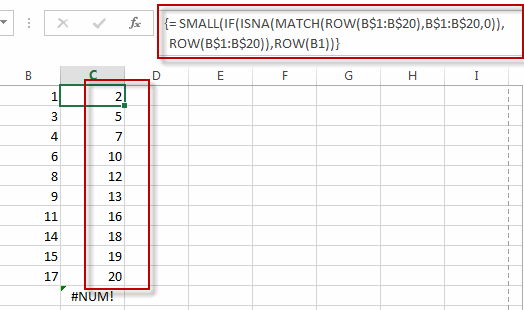

Need a Roman number sequence for some task, or just for fun? That's easy! Build a regular SEQUENCE formula and warp it in the ROMAN function. Regular sequence that moves horizontally left to right (column-wise):

Sequence that moves vertically top to bottom (row-wise): Please pay attention rows and columns are supplied in different order! Here, we input all the parameters in separate cells (E1:E4) and create 2 sequences with the below formulas. To better understand the approach, please have a look at the screenshot below. TRANSPOSE(SEQUENCE( columns, rows, start, step))įor example, to fill 5 rows and 3 columns with sequential numbers starting at 100 and incremented by 10, the formula takes this form: Please note that TRANSPOSE swaps rows and columns, so you should specify them in the reverse order: top to bottom across the first column and then right to the next column, nest SEQUENCE in the TRANSPOSE function.
Finding sequential numbers in excel series#
When populating a range of cells with sequential numbers, by default, the series always goes horizontally across the first row and then down to the next row, just like reading a book from left to right. To generate a descending sequential series, such that each subsequent value is less than the preceding one, supply a negative number for the step argument.įor example, to create a list of numbers starting at 10 and decreasing by 1, use this formula:įorce a two-dimensional sequence to move vertically top to bottom Make a decreasing (descending) sequence in Excel Though the basic SEQUENCE formula does not look very exciting, when combined with other functions, it takes on a whole new level of usefulness.

Finding sequential numbers in excel how to#
How to create a number sequence in Excel - formula examples

If you'd like to fill a range of cells with sequential numbers, then define both the rows and columns arguments. To make a horizontal sequence, set the rows argument to 1 (or omit it) and define the number of columns, 8 in our case: The results will spill in the other rows automatically. Where n is the number of elements in the sequence.įor example, to populate a column with 10 incremental numbers, type the below formula in the first cell (A2 in our case) and press the Enter key:


 0 kommentar(er)
0 kommentar(er)
